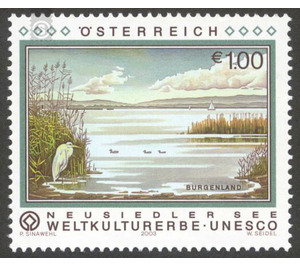heritage Site - Austria / II. Republic of Austria 2003 - 100 Euro Cent
Theme: Geology & Geography
| Country | Austria / II. Republic of Austria |
| Issue Date | 2003 |
| Face Value | 100.00 |
| Edition Issued | 500,000 |
| Printing Type | combination printing |
| Stamp Type | Commemorative |
| Item Type | Stamp |
| Chronological Issue Number | 1780 |
| Chronological Chapter | OOS-OE2 |
| SID | 608913 |
| In 58 Wishlists | |
In 1972, the UNESCO General Conference adopted a convention for the protection of the cultural and natural heritage of the world. It will select cultural and natural monuments in their diversity with special, supranational significance for the whole of humanity and secure their preservation for the future. After Hallstatt, Salzburg, Schönbrunn, etc., the Neusiedlersee was declared a World Heritage by a joint request with Hungary. It covers the entire bank area, the lake municipalities Mörbisch to Illmitz, the listed, old town of Rust, parts of the national park Seewinkel as well as the Fertö-Haság national park and castle Fertöd in Ungarn.Dieser westernmost steppe lake Europe with its unusual plants and animals is in truly unique in many ways. It is 33.5 km long, 12 km wide, but only 1.8 m deep and covers 285 km2 including the reed areas, of which almost 80% are in Austria, the rest in Hungary. The reed belt is about 100 km2 in size on the Austrian side alone and, together with 45 paints, offers ideal breeding grounds for 300 rare bird species such as avocets, spoonbills and stilt walkers. The lake with a fluctuating water level is the habitat of more than 30 species of fish, mainly eels, zander, carp and pike. Even on land exotics such as the "South Russian Tarantula" and the Moonhorn Beetle.


